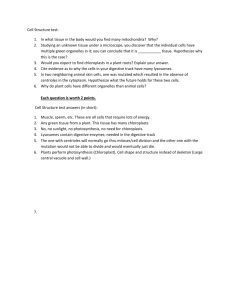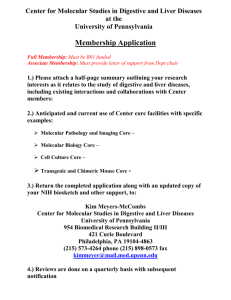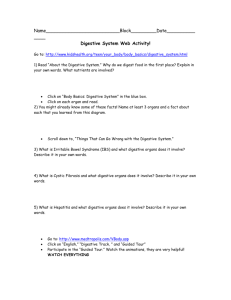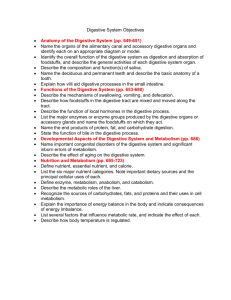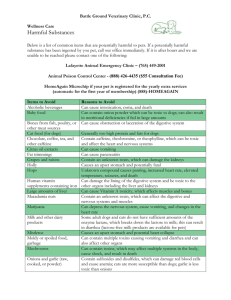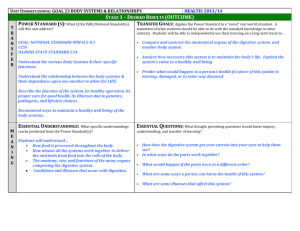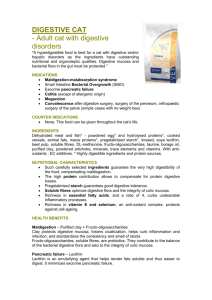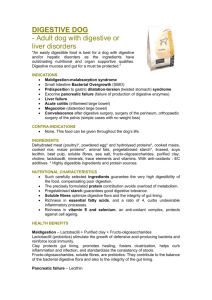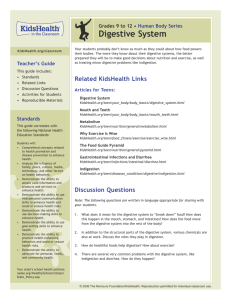THE DIGESTIVE SYSTEM
advertisement
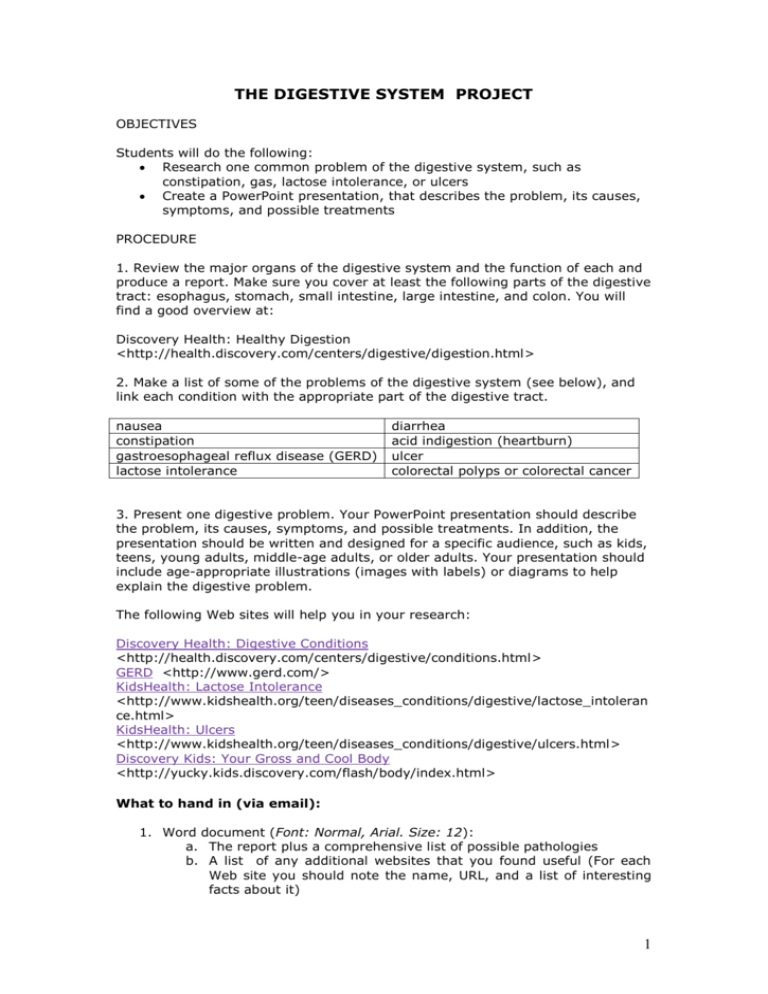
THE DIGESTIVE SYSTEM PROJECT OBJECTIVES Students will do the following: Research one common problem of the digestive system, such as constipation, gas, lactose intolerance, or ulcers Create a PowerPoint presentation, that describes the problem, its causes, symptoms, and possible treatments PROCEDURE 1. Review the major organs of the digestive system and the function of each and produce a report. Make sure you cover at least the following parts of the digestive tract: esophagus, stomach, small intestine, large intestine, and colon. You will find a good overview at: Discovery Health: Healthy Digestion <http://health.discovery.com/centers/digestive/digestion.html> 2. Make a list of some of the problems of the digestive system (see below), and link each condition with the appropriate part of the digestive tract. nausea constipation gastroesophageal reflux disease (GERD) lactose intolerance diarrhea acid indigestion (heartburn) ulcer colorectal polyps or colorectal cancer 3. Present one digestive problem. Your PowerPoint presentation should describe the problem, its causes, symptoms, and possible treatments. In addition, the presentation should be written and designed for a specific audience, such as kids, teens, young adults, middle-age adults, or older adults. Your presentation should include age-appropriate illustrations (images with labels) or diagrams to help explain the digestive problem. The following Web sites will help you in your research: Discovery Health: Digestive Conditions <http://health.discovery.com/centers/digestive/conditions.html> GERD <http://www.gerd.com/> KidsHealth: Lactose Intolerance <http://www.kidshealth.org/teen/diseases_conditions/digestive/lactose_intoleran ce.html> KidsHealth: Ulcers <http://www.kidshealth.org/teen/diseases_conditions/digestive/ulcers.html> Discovery Kids: Your Gross and Cool Body <http://yucky.kids.discovery.com/flash/body/index.html> What to hand in (via email): 1. Word document (Font: Normal, Arial. Size: 12): a. The report plus a comprehensive list of possible pathologies b. A list of any additional websites that you found useful (For each Web site you should note the name, URL, and a list of interesting facts about it) 1 c. A list of the medical words with their definitions d. A list of the academic words with their definitions 2. PowerPoint presentation Format of your Word Document: Last name/first name/student number/email: 1. ___________________ 2. ____________________ Collaborative Report: (essay, max 2000/4000 words) Websites consulted (list of additional websites) List of Medical words (max 20) Format: Example in context TERM catheter … Word class informati on … hemodialysis …the victim can be saved by regular use of a renal hemodialysis machine. noun … … … List of Academic words (max 10) Format: Example in Word class TERM context information approach …. … formula …Coca-Cola’s patented formula. noun … … …. Dictionary definition Greek translation … … A treatment used to cleanse the blood of patients whose kidneys are defective … Dictionary definition … A list of the substances used to make a medicine … αιμοκάθαρση … Greek translation … συνταγή, τύπος … EXTENSION You will get extra credit for submitting articles you have found on the Internet related to your topic. These should be submitted along with their sources, a fiveto-eight-sentence summary on the article, and a three-to-five-sentence personal reflection on why you chose the article you did and further presented to the class. A possible starting point is the Discovery Health Web site <http://health.discove ry.com/> or the NBC portal at <http://www.msnbc.com/news/HEALTH_Fro nt.asp?0dm=B---H&ta=y>. These sites offer daily highlights related to health issues. 2

